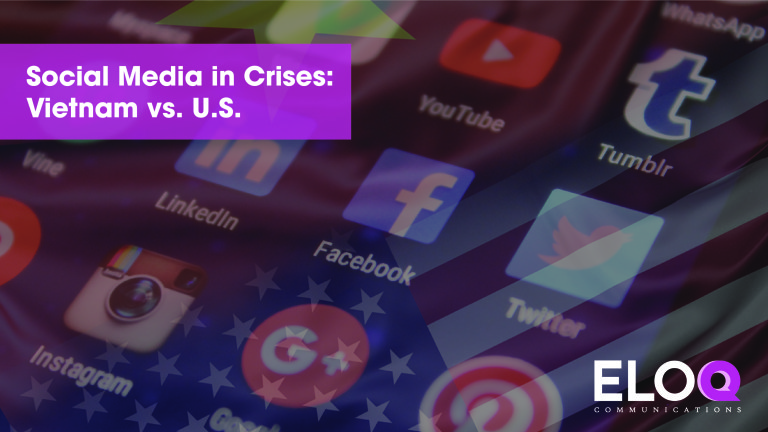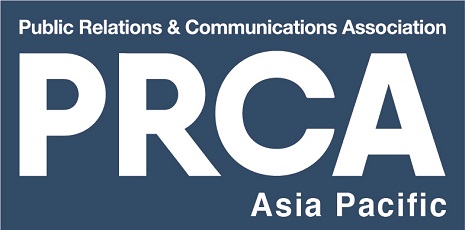An overview of how Vietnamese and American PR practitioners perceive the use of social media in crisis communication

written by Dr. Clāra Ly-Le, MComm MPRCA, the Managing Director, EloQ Communications
In Vietnam, social media has become one of the most popular communication platforms. Despite the powerful effect of social media in conditioning a crisis, and the trend to integrate social media into crisis management strategies in many countries, Vietnamese companies have often ignored or underutilized these channels.
As part of my doctoral dissertation, I seek to compare the perception of social media in crisis communication in Vietnam to that in the U.S. As America has always been considered a role model and main influencer for Vietnam’s PR practice, the comparison can help understand the underlying factors contributed to that perception. I interviewed 12 Vietnamese practitioners and 8 American practitioners who have two to 25 years experience working in the PR industry in their respective countries.
- A number of Vietnamese agency practitioners are against the use of social media in crisis communication, while using social media in crisis communication is part of the communication trend and makes U.S. practitioners appear more professional.
Throughout the interviews, the Vietnamese participants opposed social media use for crisis communication. These practitioners expressed that the disadvantages of social media can outweigh advantages. Using social media in crisis communication leads an organization not only to the chaos of uncontrollability but also to a harm of organizational reputation. As a result, crisis communication in Vietnam tends to use social media in a limited way or to completely reject this platform.
On the other hand, the American participants showed favorable responses to the adoption of social media in crisis communication. They thought that since stakeholders use social media to a great extent, especially during crises, organizations must follow the trend and integrate social media into their crisis communication plans.
- Both Vietnamese and American practitioners appreciate social media’s ability to spread messages quickly, but are concerned about its uncontrollability.
The Vietnamese participants said that the most prominent advantage of social media is its ability to spread messages quickly. However, the ability to spread messages leads to another concern of this platform, which is control. On social media, stakeholders are free to interpret (or misinterpret) and share crisis communication while organizations may have little influence or interference with it. An organization’s intended communication goal may not always be achieved. Hence, some participants expressed that using social media makes crisis communication harder and less controllable.
The American participants also mentioned that the most highly appreciated characteristic of social media is its ease of reach and engagement with target audiences, allowing organizations to meet the stakeholders in an already existing online community. Social media enables organizations to cut out the middle person and control the communication content all the way to the end-users. However, some American organizations still hesitate to adopt social media in crisis communication because of its uncontrollability, resulting from the ease of reach mentioned earlier. These organizations may trust newspaper and TV broadcast more, especially for sensitive information like crisis news.
- Most Vietnamese organizations are not confident that their communication team can use social media efficiently during crises, and most American organizations still need to learn how to use social media in crisis communication.
While it was agreed that initial adoption of social media in crisis communication is easy and requires little effort, most Vietnamese participants in the interview did not think social media is easy to use for crisis response. They shared that their organizations have doubts in the ability of the company, the team or the agency to handle a crisis efficiently on social media. As an organization feels uneasy over the speed and uncontrollability of social media, it lacks confidence in the communication team to be able to keep up with the information flow or manage a crisis tactfully. They are very cautious in integrating this platform to crisis response efforts.
In the U.S., social media in crisis communication is still used more by the stakeholders than organizations and therefore, organizations need to learn how to use and include a fair share of social media in their crisis communication plans. Therefore, to increase the efficient use of social media in crisis communication and to boost the confidence of an organization to allow more social media use during crises, the participants called for more education on the platform as well as willingness to let go of some control to achieve overall communication efficiency.
Through this brief comparison with the current social media use in crisis communication in the U.S., I observed that it would take significant time for organizations to get used to social media and be able to use it comfortably. Even though American organizations have been exposed to social media longer and more frequently than their Vietnamese, they still lack confidence in using this platform efficiently for crisis purposes. However, most American organizations still support social media and adopt it. Thus, maybe in the near future, Vietnamese organizations may favor more and use more social media to efficiently mitigate any crisis.
This blog was published by EloQ Communications, Vietnam, and written by Dr. Clāra Ly-Le, MComm MPRCA, the Managing Director of EloQ Communications. Her work focuses on social media and crisis communication. The original content was published on EloQ’s blog.
